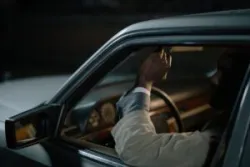
Among the three types of distracted driving outlined by the Centers for Disease Control and Prevention (CDC), visual distractions are one of the most easily recognizable ones. One of the key tenets of safe driving is to keep your eyes on the road at all times, and we were taught early on to eliminate distractions that are going to veer you off this task. You may have learned to:
check your side mirrors and blind spots before switching lanes
check your rearview mirror occasionally
refrain from texting while driving
These are all excellent lessons to uphold. But as you become a more seasoned driver, the tendency to be more lax on these safety precautions slips out from time to time. We begin to surrender to visual distractions and get complacent after having driven on the road accident-free. We nonchalantly start sending out the occasional text as we’re behind the wheel. It was “too important,” we say to ourselves. We start switching lanes abruptly without regard for any cars that we may hit. Perhaps we may even start fiddling with the car radio and then hit the brakes hard when we look up at the dashboard, realizing we were a little too close to hitting the bumper of the car in front of us.
If this sounds like you, there’s a chance that you may have been engaging with visual distractions. Visual distractions are one of three types of distracted driving that will interfere with your ability to see your surroundings on the road, potentially causing a car accident. According to the National Highway Traffic Safety Administration (NHTSA), “eight percent of fatal crashes, 14 percent of injury crashes, and 13 percent of all police-reported motor vehicle traffic crashes in 2020 were reported as distraction-affected crashes.” Thus, it’s important that we refrain from engaging with any visual distractions when we’re driving. This includes:
Looking at your phone
Looking too intently at Google Maps or any other navigation apps
Checking out police encounters and accidents
Getting too engrossed at billboard advertisements
Facing your passengers when talking to them
And many more!
Fortunately, there are things you can do to combat visual distractions:
Put your phone on “Do Not Disturb” or on “Airplane” mode
Create a playlist with your favorite songs so you lessen the need of “changing” what you’re listening to
Make sure you familiarize yourself with your route
OTHER TYPES OF INATTENTIVE DRIVING
But visual distractions only constitute a part of inattentive driving. In total, there are three types of distracted driving:
Visual Distraction
Manual Distraction
Cognitive Distraction
CALL OMEGA LAW GROUP
We trust that you have continuously implemented necessary safety measures to protect yourself and others on the road, but you also need to prepare yourself for when the worst occurs. We at Omega Law Group are happy to help. Give us a call at 866-942-3881 or visit our Beverly Hills location at 9454 Wilshire Blvd., Suite 830, Beverly Hills, CA 90212.




